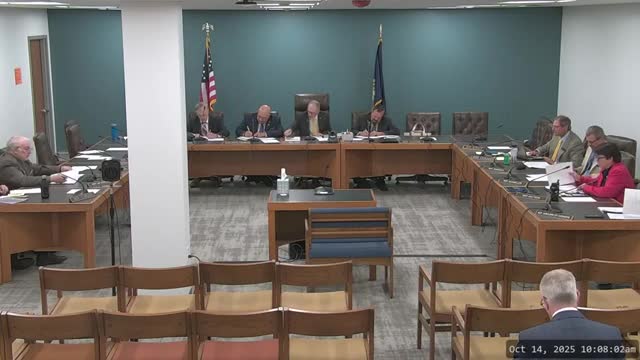Committee retains and refers SB 106 on commercial/industrial net metering for interim study
October 14, 2025 | Science, Technology and Energy, House of Representatives, Committees , Legislative, New Hampshire
This article was created by AI summarizing key points discussed. AI makes mistakes, so for full details and context, please refer to the video of the full meeting. Please report any errors so we can fix them. Report an error »

The Science, Technology and Energy Committee referred Senate Bill 106 — a bill that would allow commercial and industrial customer-generators to participate in net energy metering — for interim study after extensive questions about its economic and operational impacts.
Chair remarks and why the bill was retained: the committee chair said members retained SB 106 earlier because significant economic and implementation questions remained. The bill, as drafted, would permit customer-generators up to 5 megawatts and requires that at least 33% of the electricity generated be consumed on-site annually; the chair and other members said that threshold raises questions about whether the measure would effectively create "mini generators" without commitments to supply the grid.
Objections and concerns: Representative Harrington said he could not "get beyond" the annual 33% on-site use requirement for systems up to 5 megawatts, calling it a concern because those facilities could send large amounts of power to the grid without firm commitments. He warned utilities and system operators could not rely on such output. Several members asked whether residential ratepayers would bear costs if net metering for large commercial generators expanded; one member pointed to filings showing current net metering costs recovered from ratepayers.
Support and counterpoints: other members argued large commercial rooftop and site-based solar, deployable quickly compared with other resources, could supply daytime power and relieve pressure on fossil resources; supporters said private capital could accelerate deployment and lower scarcity-driven prices. Representative McGee and others noted businesses want assurance — often a 20-year expectation of net-metering treatment — to justify large upfront investments.
Committee action: after discussion, the committee voted 17-0 in executive session to refer SB 106 for interim study. The committee's motion and roll call were recorded in the executive session; the item will be placed on the committee consent calendar for the next steps.
Key outstanding questions for study: what level of on-site consumption should apply for large C&I generators; how grandfathering (20-year protection in the bill) interacts with existing net-metering rules; whether studies about smaller systems (the Value of Distributed Energy Resources report) apply to 5 MW systems; and how ISO New England and the forward capacity market would treat uncommitted generation.
Chair remarks and why the bill was retained: the committee chair said members retained SB 106 earlier because significant economic and implementation questions remained. The bill, as drafted, would permit customer-generators up to 5 megawatts and requires that at least 33% of the electricity generated be consumed on-site annually; the chair and other members said that threshold raises questions about whether the measure would effectively create "mini generators" without commitments to supply the grid.
Objections and concerns: Representative Harrington said he could not "get beyond" the annual 33% on-site use requirement for systems up to 5 megawatts, calling it a concern because those facilities could send large amounts of power to the grid without firm commitments. He warned utilities and system operators could not rely on such output. Several members asked whether residential ratepayers would bear costs if net metering for large commercial generators expanded; one member pointed to filings showing current net metering costs recovered from ratepayers.
Support and counterpoints: other members argued large commercial rooftop and site-based solar, deployable quickly compared with other resources, could supply daytime power and relieve pressure on fossil resources; supporters said private capital could accelerate deployment and lower scarcity-driven prices. Representative McGee and others noted businesses want assurance — often a 20-year expectation of net-metering treatment — to justify large upfront investments.
Committee action: after discussion, the committee voted 17-0 in executive session to refer SB 106 for interim study. The committee's motion and roll call were recorded in the executive session; the item will be placed on the committee consent calendar for the next steps.
Key outstanding questions for study: what level of on-site consumption should apply for large C&I generators; how grandfathering (20-year protection in the bill) interacts with existing net-metering rules; whether studies about smaller systems (the Value of Distributed Energy Resources report) apply to 5 MW systems; and how ISO New England and the forward capacity market would treat uncommitted generation.
View full meeting
This article is based on a recent meeting—watch the full video and explore the complete transcript for deeper insights into the discussion.
View full meeting
